Meet the New Wine Darling at 25th “Spain’s Great Match”
(Gerry Furth-Sides) Worthy of the Gran Hotel itself, the 25th “Spain’s Great Match” headlined Albarinõ, the new “darling of the wine world” to set the high tone for Spain’s finest, most memorable wines. Chef Jose Andres’ incomparable Spanish bites and the sheer volume of wine offerings made the all-day event feel full enough for two.
The morning began at long seminar tables already set with Albariño, the new “darling” of the wine world (in a similar way ancient Georgian wine, became last year’s “new” darling). The wine is not new. It has already earned recognition as Spain’s most notable white wine. Albariño is identified with five subzones in the Rías Baixas wine region, which spans the western Galician coastline in northwest Spain, north of Portugal. At its heart, Val Do Salnés is the wine making capital of the region. The region has absolutely no connection except for the name to the eastern European area, Galicia.
Rías Baixas is fascinating for its strong resemblance to the emerald green fields of Ireland (also breathtakingly shown in the Gran Hotel because it was filmed in the region), complete with mist and rainfall, here balanced out by over 2000 hours of abundant sunshine during Albariño’s critical growing and ripening season. The wines as a result contain excellent natural acidity and balance along, with its characteristic aromatic profile influenced by hard granite mother rock.
These vineyards offer up a highly approachable wine with a mix of floral, oceanic and citrus aromas. On the palate, a good Albariño “is racy” but not sharp, with a sense of minerality derived from the granite bedrock common to the Rías Baixas region. Albariño also has the tastes of lees (spent yeast), buttercup, peach, nectarine, melon, citrus and even a touch of salty brine, influenced by nearby Atlantic Ocean.
Clean, classic tasting Albariño pairs with all of the elegant España classics, elevating the food flavors with its silvery, layers of mineralogy while remaining low in acidity: Ibirico ham, potatoes and cheeses, rather than seafood or fish because of the creamy rather than buttery quality of the wine.
Our enthusiastic guide, Michael Meagher, could not emphasize more that Albariño is uniquely grown predominantly on old-school overhead pergolas, regaling us with us tales of “looking up not down” on his trip there. Another wonderful characteristic he told us was how the winemakers always collaborate with each other, again unlike winemakers in other areas of the world.
Compared to other white wines, Albariño tends to taste lighter in body. While many Albariño wines are known to age for 5–7 years, this wine is usually best consumed within a year or two after the vintage to maintain its trademark acidity and bold, fruity aromas.
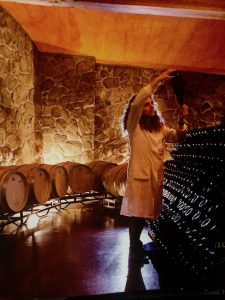
Careful harvesting are handpicked in small plastic 40-pound crates, then aged in precise temperature oak barrels.
For most information about food products, and the wine, please see:
//localfoodeater.com/best-spanish-artisanal-la-espanola-meats/

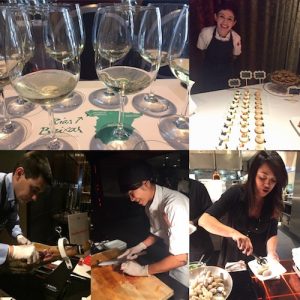
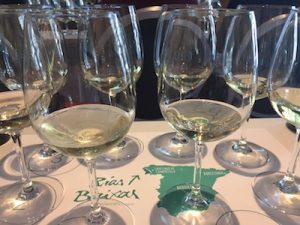

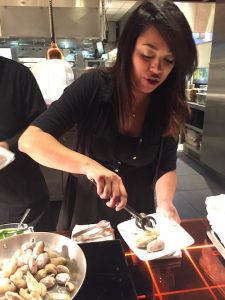
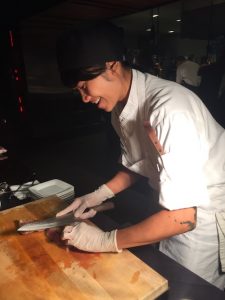
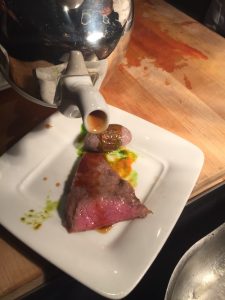
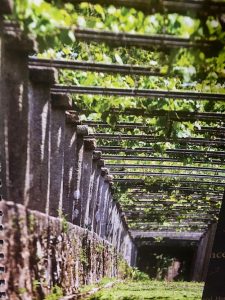


 Gerry Furth-Sides
Gerry Furth-Sides  Barbara Hansen
Barbara Hansen  Chef-owner Alain Cohen
Chef-owner Alain Cohen  Roberta Deen
Roberta Deen  Jose Martinez
Jose Martinez  Nivedita Basu
Nivedita Basu